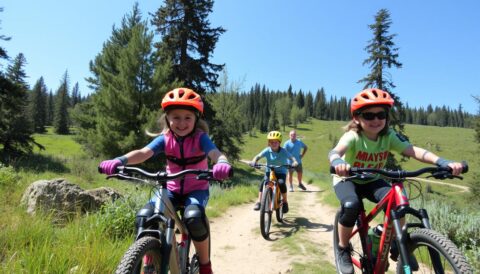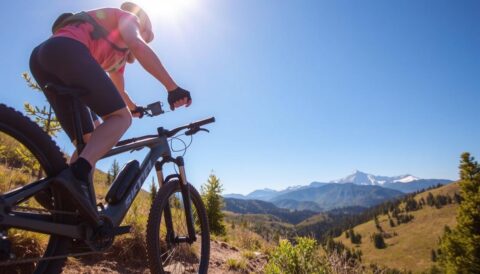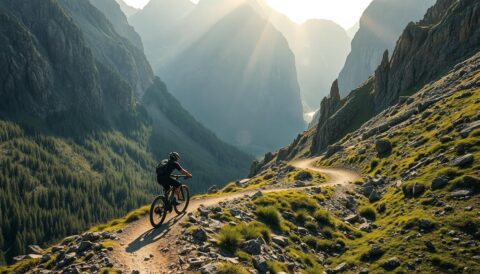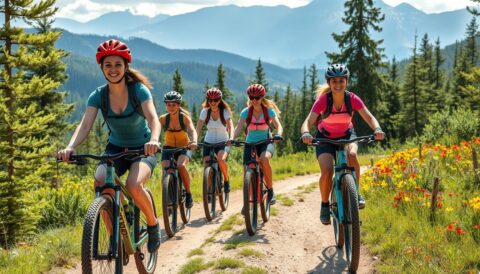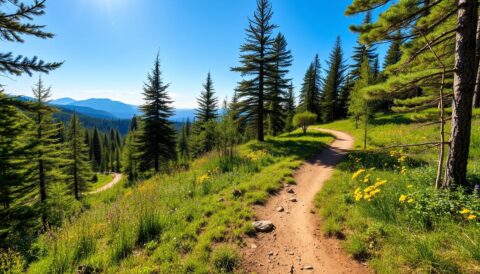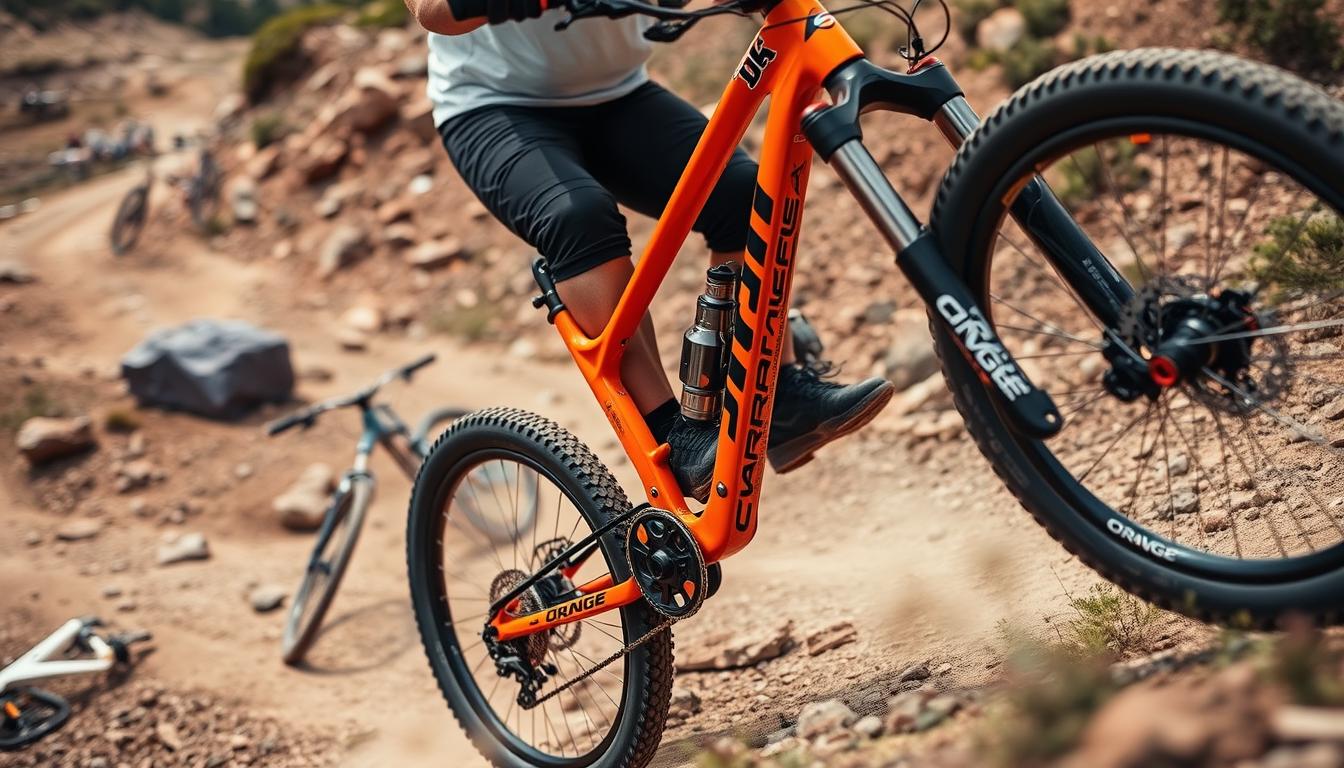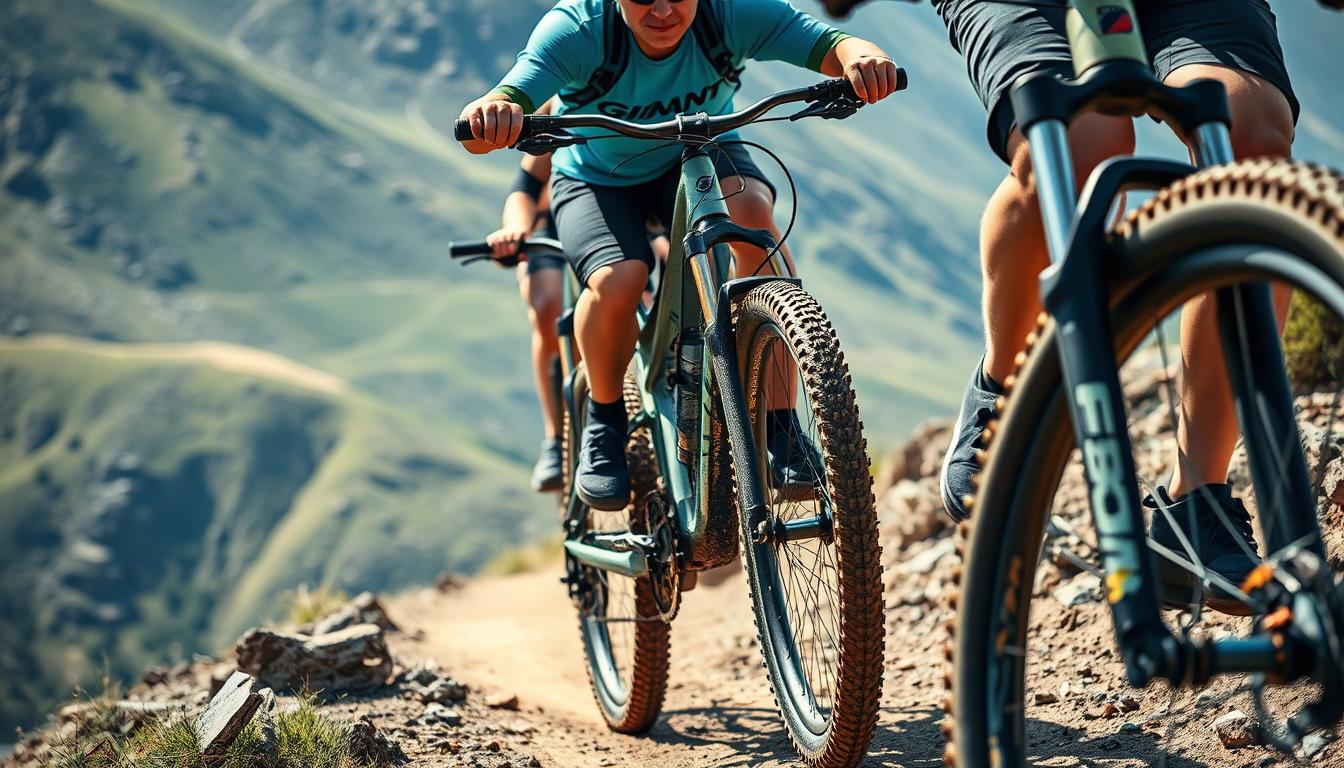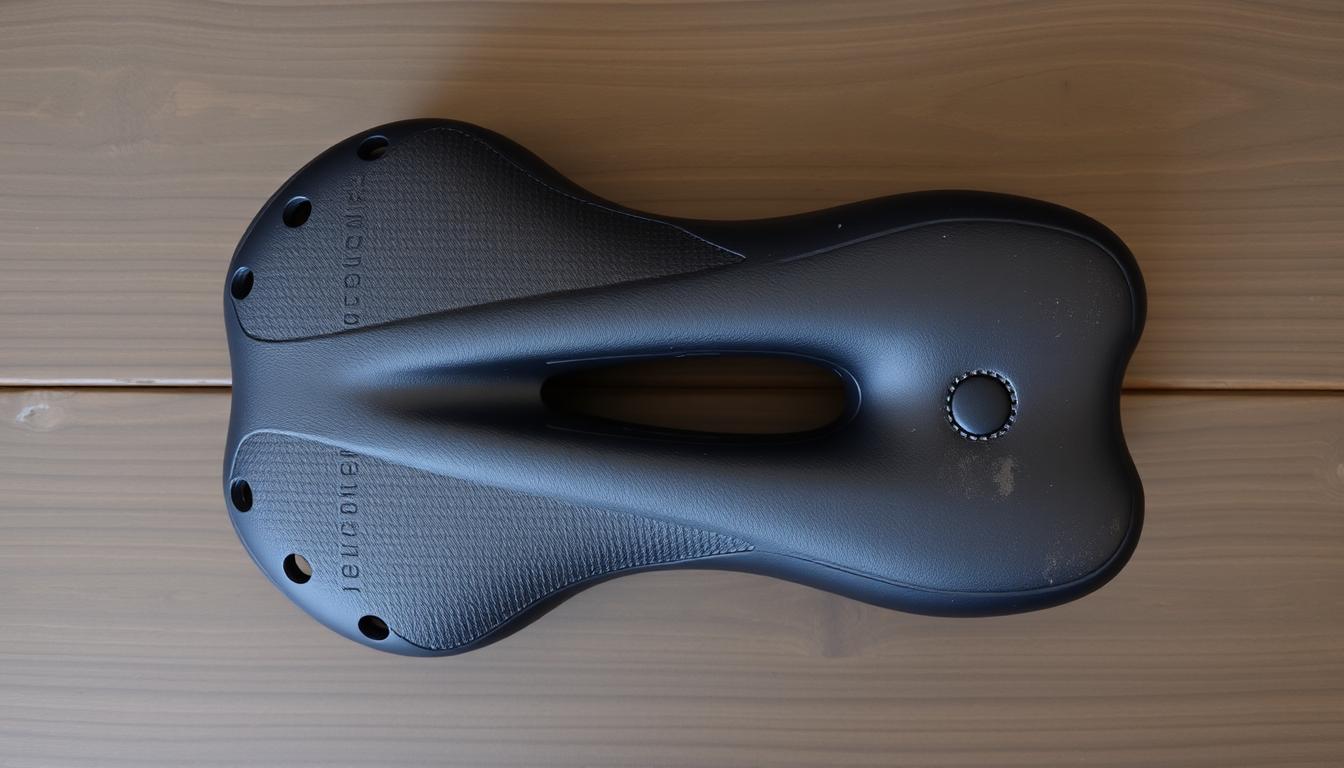Downhill mountain biking is thrilling but tough. It mixes physical stamina with top-notch technical skills. To get better, riders need a balanced training plan. This plan must improve bike handling, endurance, and strength. By working on these, riders can tackle tricky terrains and master downhill riding.
Practice and hard work are key to success, as many athletes will tell you. Tyson Henrie has spent eight years teaching young bikers. He believes in letting kids discover biking on their own. This way, they grow a real love for the sport.
Training should also meet the various challenges of the trails. Adding fun to training sessions helps keep riders motivated. They keep getting better and enjoy the sport more. After learning the basics, Henrie suggests moving on to formal coaching. This step boosts the journey to downhill biking success using expert tips.
The Importance of Training for Downhill Mountain Biking
Training is vital for anyone looking to succeed at downhill mountain biking. It’s a tough sport that demands both physical prowess and technical skill. By targeting their training, riders can prepare for what they’ll face on the track.
Understanding the Demands of the Sport
Downhill mountain biking mixes speed, agility, and endurance. Riders tackle high-speed descents and tricky sections requiring top fitness. It’s about more than just being fit. You need to know how to handle your bike on difficult terrains.
Physical and Technical Skills Required
Riders need strength, fitness, and biking skills to do well. Training should boost your:
- Strength: Improve core and leg power for lengthy descents.
- Cardiovascular fitness: Build endurance with aerobic exercises.
- Technical proficiency: Sharpen handling skills for different landscapes.
Include drills in your training to polish your cornering and control during steep drops. Mastering your bike’s mechanics is crucial too. It keeps your bike reliable during races. A focus on both physical training and technical skills builds confidence and success.
Creating a Race-like Training Circuit
Creating a training circuit similar to a race is key for downhill biking prep. It helps riders get used to racing challenges. By making a varied circuit, you mimic real races, boosting your MTB skills.
Designing Your Own Circuit
To build your circuit, start with careful course design that includes different features:
- Corners for better turning skills
- Steep climbs to build endurance and strength
- Technical descents to improve control
This blend imitates real race challenges, building muscle memory. It teaches you vital techniques for racing well.
Incorporating Race Features
Adding race elements to your circuit boosts your ability. Think about adding:
- Berms to learn leaning and carving
- Jumps to master air control and landings
- Diverse terrains for better balance and adaptability
Training on these aspects at race speed helps riders adjust their techniques. This way, they become familiar with actual race scenarios, improving reaction times and performance in competitions.
Building Strength and Endurance
Strength and endurance are crucial for downhill mountain biking. A solid training foundation with various techniques helps riders get better and ride safely.
Utilising Low Intensity, Longer Duration Training
Low intensity workouts are key for ongoing training. They build endurance, letting athletes ride more while staying safe. Long, relaxed rides boost aerobic capacity, vital for downhill biking. This is especially useful for races with tough parts, like a 3500′ stage in June.
Incorporating Interval Training
Interval training mixes high-intensity workouts with rest. It boosts heart health and core strength. This training helps get ready for race demands. Exercises like kettlebell swings, deadlifts, and chin-ups build strength while improving endurance.
The Role of Running in Off-Season Training
Running in the off-season has many benefits. It works muscles cycling doesn’t cover, like glutes and hamstrings. This boosts strength and grip endurance. Start slowly to avoid soreness. Mix running with other training, using tips from online forums. Training apps offer personalised plans for your goals.
Essential Technical Skills for Downhill Mountain Biking
Downhill mountain biking needs a good grip on technical skills. Riders should work on cornering, climbing, and controlled descents. These areas boost performance big time.
Mastering Cornering Techniques
Cornering skills are key for speed and control. Learning to handle different corners, riders get better at positioning and choosing paths. It’s all about keeping the right weight while turning.
This helps bike control, cuts lap times, and grows confidence.
Improving Climbing Efficiency
Climbing efficiently is a game-changer on steep paths. Focus on how you distribute your weight and pick your gears. This way, you won’t lose pace.
Good balance and gear choice make tackling hills smoother.
Practising Controlled Descents
Getting better at descending safely is crucial. It involves learning about braking and how to distribute your weight. Being calm during a descent makes biking on tough trails fun.
Gear Up Right for Success
Picking the right biking gear is key for comfort and doing well in downhill biking. Choosing a mountain bike wisely is a must. The bike’s frame shape, suspension, and tyres affect your ride deeply. It’s smart to get a top-notch full-face helmet for protection, especially if you crash. Also, wear protective elbow pads, knee braces, and other armour to lessen injury risks on tough tracks.
Choosing the Right Bike and Equipment
Downhill mountain bikes come with special suspension for tricky trails. Choose bikes with strong frames of aluminium or carbon fibre to survive rough rides. High-quality disc brakes are a must for safe stops. Also, wear gloves that breathe and protect, along with sturdy shoes for pedalling and ankle safety. Wearing MTB shorts and shirts that wick away sweat adds comfort, keeping you dry on hard rides.
The Importance of Proper Fit and Adjustments
Getting your bike to fit you is crucial for top performance. Adjusting the saddle and handlebars properly boosts comfort on longer trips. It’s important to check your gear for signs of wear. Swap out old helmets and gloves when needed. Good fitting and regular checks on your bike’s setup help you adapt as you improve. Keeping comfy and safe lets you focus on getting better at downhill rides.
Conclusion
Downhill mountain biking success needs both physical and technical training. It involves understanding the sport’s demands and creating a training plan. This plan readies riders for real race conditions and builds their confidence on tough terrains.
Riders should work on endurance and strength, as well as their riding skills. Mixing low-intensity sessions with interval training boosts performance. As riders practice more, learning core skills becomes essential for a rewarding experience.
Downhill biking is an exciting break from everyday life. It lets riders enjoy fast rides and nature’s peace. Following these training tips will improve their skills. It also brings joy and a deep sense of satisfaction in their biking adventures.
FAQ
What is the best way to prepare physically for downhill mountain biking?
To get ready for downhill biking, you should work on strength, flexibility, and cardio. Do long, low-intensity workouts to build stamina. Interval training boosts speed and metabolism.
How important are bike handling skills for competitive racing?
Handling skills are key in competitive downhill biking. Being good at cornering, climbing, and descending boosts your skill. This helps you handle tough terrain better.
What should I include in a race-like training circuit?
Your training circuit should mimic real races. Include sharp corners, steep climbs, and technical descents. Regular practice on these features grows your confidence and skills on actual trails.
Can running help improve my mountain biking performance?
Yes, running builds strength and endurance, especially in your glutes and hamstrings. It boosts your explosive strength. Start slowly to avoid soreness.
Why is mastering cornering techniques important?
Good cornering skills make you faster and more efficient. Practice different techniques and focus on how you position your body. This reduces lap times and builds your confidence in turns.
What role does bike fit play in downhill mountain biking?
The right bike fit is critical for comfort and control. Adjust your saddle and handlebars for better power, less fatigue, and an improved ride. It’s crucial for doing well in downhill biking.
What types of training should I focus on to improve my climbing efficiency?
Improve your climbing by working on weight distribution and choosing the right gear. Keep a steady pace. Training regularly on these areas makes climbs faster and less tiring.
What protective gear should I use when downhill mountain biking?
Always wear a helmet, gloves, and knee pads for protection. Quality gear keeps you safe while taking on tough trails, and lowers injury risk.

